Essential & Powerful Tools to Break up the Soil - 2023 Guide
Written by Ivy
Jan 04 2023
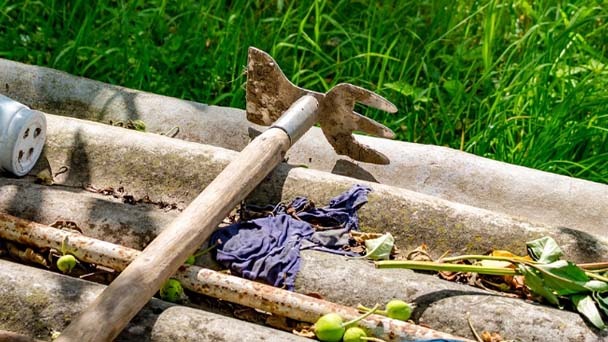
Use power tools to loosen soil if you have clay or hard soil that needs to be prepared for planting. This will simplify the task. The most popular choice for a home gardener is a rototiller. Take precautions to stay safe and avoid injury, as with all power equipment.
Quick Look of Essential & Powerful Tools:
- Broadfork
- Pickaxe
- Rake
- Shovel
- Spade
- Spading Fork
- Tiller
- Trowel
1. Broadfork
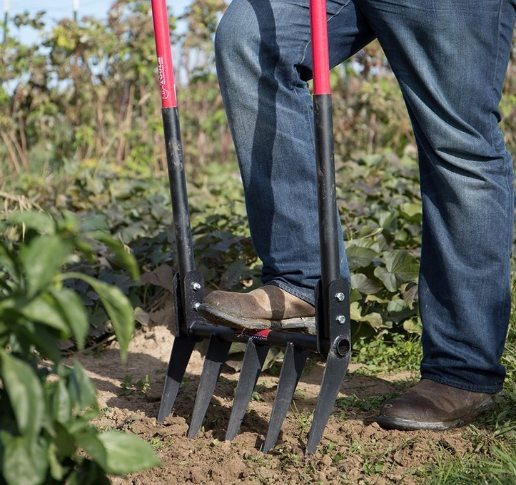
This device, also known as a U-bar digger, has four to eight 10-inch-long tines that are attached to a U-shaped bar. As you push the tool into the ground and pull it out, the tines loosen the soil.
2. Pickaxe
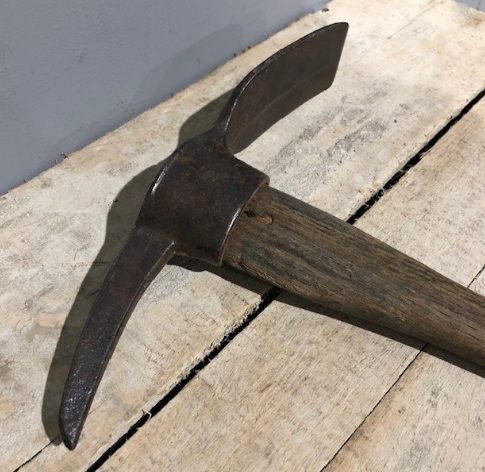
When your soil is rocky or loaded with tree roots, this tool is a necessity. Small rocks and soil clods can be crushed using the broad, hoe-like blade.
These tools aren't just made for digging; they can also be useful to break the top layer of soil when the ground is so stony or tightly packed that even a Groundbreaker Spade struggles to move forward on its own.
They have a single steel head with two cutting prongs, one of which can be horizontal, the other vertical, or one of which can be pointed and the other flat or vertical.
The handles are typically made of wood or composite plastic, though they can also be made of fiberglass, and are typically shorter than most other larger hand tools.
The handles are usually thick yet narrow enough to fit your hands around because they are subject to a lot of stress and pressure.
It's simple and affordable to replace handles.
3. Rake
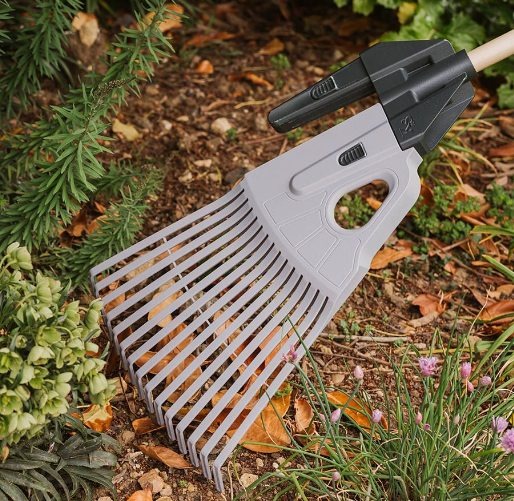
You'll probably need one of each kind—a steel garden rake like the one in the picture and a steel or bamboo leaf rake. Leaf rakes are useful for spreading lightweight mulches and smoothing the finely prepared soil on top of a seedbed. Garden rakes can quickly level out the ground and make raised beds.
4. Shovel
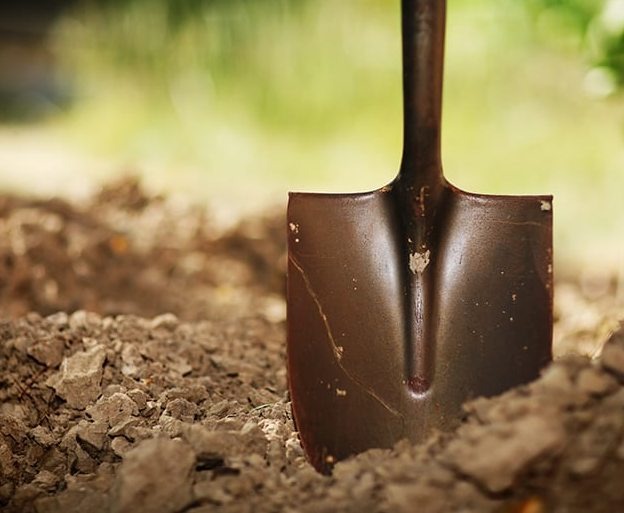
a necessary rounded-edged tool for caring for soil. This tool is useful for scooping compost, cutting through hard ground, and removing soil from planting holes.
Shovels are intended to move larger amounts of pre-loosened soil rather than to break up the ground.
ShovelsShovel blades are typically made of thin, shaped steel that is frequently galvanized rather than stainless. In order to hold large amounts of broken soil on the blade during relocation, they have raised edges and a curved overall shape.
These are lighter-weight tools because they are only used for relocation and do not break or loosen soil.
Of course, they can also be used to transport large amounts of any loose materials, such as sand, gravel, compost, or animal feed.
It is possible to use composite plastics, wood, or tubular galvanized steel for handles.
5. Spade
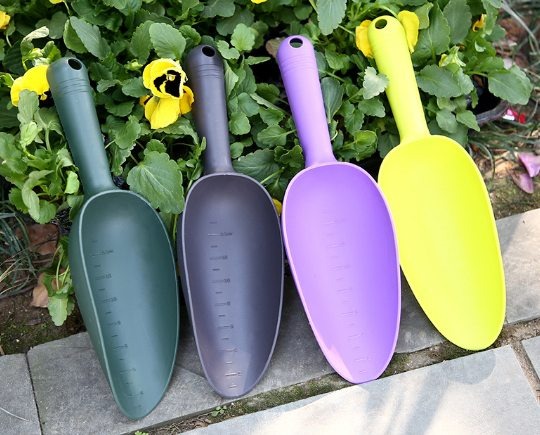
Cutting through sod is a breeze with a squared-off blade. Additionally practical for edging and for digging new beds or borders.
Plant moving and digging up are made as simple as possible with the help of special transplanter spades.
They are made of stainless steel and have ash wooden handles, and they are the same size as a standard digging spade. However, the blades are more inwardly curved, and the cutting edge is also gently curved.
The end result is a specialized spade that greatly aids in creating a smooth, circular cut-out around the plant and is well balanced to remove it as gently as possible while, most importantly, maintaining the root-ball in tact.
Then it offers a secure cradle shape so that the plant can be accurately moved to its new location and inserted into its new hole or home.
Transplanter spades can serve as general-purpose garden digging tools if you only want to buy one spade hand tool because of how similar in size and weight they are to digging and border spades.
6. Spading Fork
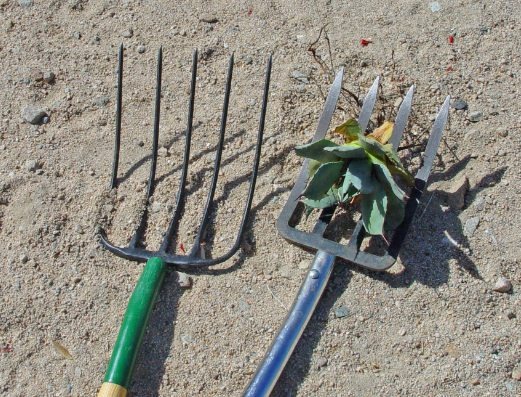
The spading fork can mix materials into the soil and harvest root crops even though it was made specifically to cut into the soil with its four flat or slightly rounded tines.
Digging forks are the most common type and have four stainless steel tines and a flattened foot ledge. However, they are typically narrower than spades because a fork requires less downward pressure.
Handles are typically made of Ash, fiberglass, or composite plastics, some of which may be curved for the best ergonomics (which cannot be achieved with conventional wood or fiberglass; hence, the frequently exorbitant price).
Garden forks are designed to simply break up the top soil, particularly where it has become compacted and is preventing the infiltration of water and air into the soil.
In order to break up the soil and facilitate hand collection of weeds, they are also useful when weeding in close proximity to established plants.
Smaller fork heads are especially helpful for getting in between existing plants while minimizing root disturbance. Garden forks come in a variety of sizes, being specifically designed for users of different physical sizes and strengths.
7. Tiller
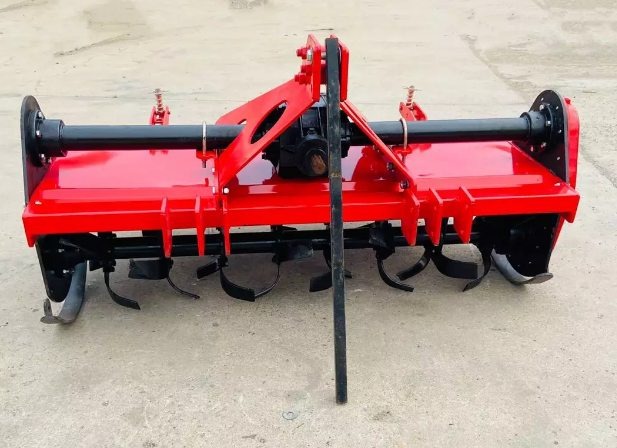
When it comes to breaking up large soil clumps, digging furrows, and incorporating cover crops, compost, and soil amendments, rotary tillers are unmatched. (Overtilling, however, should be avoided as it damages soil structure.)
8. Trowel
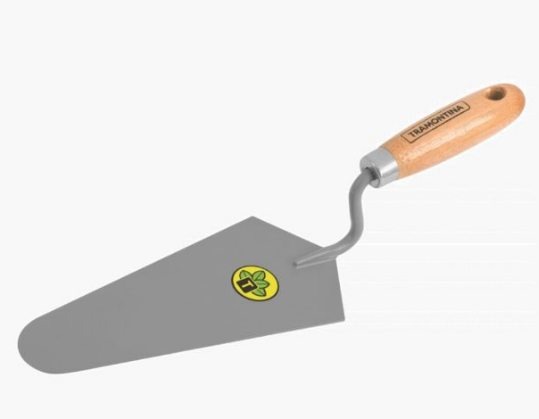
This tiny shovel works great for pulling out unwanted weeds as well as digging holes for smaller plants and bulbs.
Best Tools for Digging a Trench
Trenches are a very common type of digging that entails making long, narrow excavations. For foundations of exterior walls and drainage channels, these are ideal.Cutting sections out of the ground with a spade is the most effective way to dig a trench.
Wheelbarrows can be used to transport the soil sods. Generally speaking, the soil structure becomes moister and more compact as you dig deeper.
Working backwards and cutting out tidy soil blocks may be simple as a result. However, if the ground is stony and hard, graft bars or pick axes can be used to loosen it.
- Spade
- Wheelbarrow
- Shovel
- Pickaxe
- Graft
- Tape measure
Best Tools for Digging Post Holes
Another common excavation involves creating deep, circular holes so that vertical posts can be erected. These could be posts for decking, pergolas, or fencing. Post holes require very specialized digging equipment because of their deep and constrained dimensions.
In most cases, the shallower parts of the hole can be dug with a spade, but as you go deeper, it can get much harder. This is due to the fact that as you descend further, the ground might become much harder and more difficult to navigate.
Additionally falling directly to the bottom, the loose debris is challenging to gather with standard spades. To deal with this post hole, diggers can be pushed down into the hole to gather loose debris.
Grafts can be used to penetrate deeply and relieve compaction on hard, compacted ground. An electric hand breaker can be used to effectively break up any buried concrete or masonry.
Gasoline augers can quickly drill post holes if you need to dig several holes in soft soil.
- Spade
- Graft
- Digging bar
- Post diggers
- Hand breaker
- Auger
- Wheelbarrow
- Tape measure
Best Tools for Digging Hard Ground
Nothing is probably worse than trying to dig in very hard ground in the garden. Garden soil can be hard for a variety of reasons, including soil type, rocks, compaction, and moisture content.Allowing water to soak through the surface can aid in digging, which is frequently very difficult in dry ground. A capping layer that is difficult to penetrate can frequently form on well-trodden ground.
Builder's debris that has been buried beneath the topsoil in backyards frequently causes digging obstructions. The best digging implements are those that employ extra force and penetrating working components.
We have included the best tools for digging hard ground below:
- Pickaxe
- Mattock
- Graft
- Digging bar
- Trenching spade
- Spade
- Shovel
- Wheelbarrow
Best Tools for Digging in Clay
Getting a good hole in clay soil is notoriously difficult. It can become rock-hard and dry in the summer and wet and sticky in the winter.Clay soil should be dug on a warm, sunny day in the late spring. The ground is currently dry enough so that nothing will stick to it but is still moist enough to allow for digging.
The inability to work efficiently is another drawback of wet clay soil caused by your shoes sticking to it. Have a pointing trowel on hand to scrape clay off tools when digging in wet clay.
Car wax can occasionally prevent clay from sticking to shovels and spades. The ideal digging equipment for clay soil is highlighted below.
- Mattock
- Graft
- Spade
- Trenching spade
- Shovel
- Trowel
- Wheelbarrow
Best Tools for Digging a Patio
Patios and other hard surfacing are very frequently the reason for backyard ground excavation. For such projects, digging is essential to get rid of the topsoil, which is soft and prone to settlement and movement.It depends on your particular geology, but typically a depth of 200mm is sufficient when excavating for a new patio. Dig as deep as possible until you reach a layer of natural resistance. This may be a layer of compacted subsoil or a hard, dense clay pan.
The ground beneath a patio should be difficult to dig into and free of any loose soil. The edges of the patio should be dug neatly and squarely, with an effort to dig at a constant depth throughout.
Typically, a spade and shovel are best, but for tasks requiring hard ground, digging bars, breakers, mattocks, and pickaxes are also helpful. Over-excavation is a common issue with patio construction. In order to consistently excavate at the proper depth, tape can be wrapped around a spade blade at that depth.
- Spade
- Shovel
- Wheelbarrow
- Graft
- Digging bar
- Hand breaker
- Mattock
- Pickaxe
- Spirit level
- Tape measure
Best Tools for Digging Up Tree Roots
Digging can be extremely difficult when dealing with tree roots. They not only physically obstruct digging equipment, but as they expand, they compact and dry out the soil. The right strategy can be used to overcome these difficult digging conditions.
Tap roots, lateral, anchor roots, and fine roots are the three main root types found in trees. To stabilize the tree, tap roots delve deeply into the soil. Considering how deeply they penetrate the ground, these rarely cause problems when digging.
Thick roots that extend horizontally and downward are known as lateral anchor roots. These can obstruct digging and, depending on the age of the tree, can pose a serious obstacle.
If only a few are removed, the tree shouldn't be unstable, but ideally none should be removed. An axe, grafts, digging bars, and the axe blade of a mattock can all be used to chop roots larger than one centimeter in diameter.
The most frequent type of root found when digging are fine roots, which resemble mats and draw in water. With spades, grafts, digging bars, and mattocks, these can be divided into smaller pieces. The top tools for digging tree roots are listed below.
- Spade
- Trenching spade
- Shovel
- Digging bar
- Graft
- Demolition scraper
- Saw
- Axe
- Pickaxe
- Mattock
Best Method and Tools for Digging Up Bamboo Roots
Bamboos come in a wide range of exquisite varieties, shapes, colors, and forms. It should come as no surprise that we enjoy growing these specimens with a tropical appearance in our gardens.However, the root systems of these plants are incredibly strong and dominant. The rhizomes or roots have a horizontal growth habit that can result in the formation of a thick, fibrous mat.
Some species are more problematic than others, and some, like the phyllostachys, can even pass through solid objects like walls and floors. As a result, it frequently happens that after becoming established, many people choose to remove bamboo.
The issue is that removing bamboo roots can be very difficult. Their thick root systems form a tight net in the ground, drying it out and making it difficult to dig. There is a method for removing bamboo roots, but it calls for a particular technique and specific digging tools.
You must dig a trench all the way around the root mass of bamboo because it has horizontal, clump-forming roots. This trench needs to be at least 600mm deep for large bamboos.
Don't cut the bamboo stems you want to get rid of because you might need them later to get the plant out. You can sever any runners from the main plant and rip them up by digging the trench.
Try to remove as much soil from the root mass as you can when digging the trench. To allow the weight of the plant to be applied against the root mass, an air void must be made around it.
The bamboo stems and leaves should now be strung together to form a solid mass. Examine the plant's instability by pulling and pushing on it. Be cautious because bamboo can be sharp; if necessary, cover the foliage with an old sheet or blanket.Perfect if you can pull the plant free! To kill it and make it lighter to dispose of, remove it from the hole and let it dry out. Fill the perimeter trench with water and wait until the water has completely absorbed into the soil if the bamboo is still resistant to being pulled free.
The ground should become softer as a result, making it easier for the roots to separate from the soil. If not, keep digging around the root mass and remove any plant-attached roots. The bamboo will eventually topple over and come loose from the ground if you continue doing this.
Due to their extreme toughness, bamboo roots may require chopping and even sawing into separate pieces. We have listed the best tools for digging up bamboo roots below:
- Spade
- Trenching spade
- Shovel
- Pickaxe
- Mattock
- Digging bar
- Graft
- Coarse saw
- Buckets
- Demolition Scraper
Summary
Who would have thought that breaking up the soil could be done in so many different ways? There are still more that haven't been mentioned up to this point, but they typically have very specific or niche applications.
We sincerely hope that after reading this article, you are better equipped to choose your next digging or ground-breaking hand tool.
Like with all tools, the higher the price, the better value you typically get. Yes, it's true; don't confuse value with cheapness. The cheap Chinese knockoffs will probably only make you happy for a few months or years at most, whereas a Garden Spade that costs over $100 will likely last you a lifetime and possibly even longer.
And then there's the pure joy of using a high-quality, well-designed, and well-made tool; for discriminating gardeners, there's nothing better than the feel of a well-balanced hand tool that's made of quality wood and stainless steel to last.
Latest Updated
- Benefits of Bugleweed - 7 Science-backed Health Benefits
- Bugleweed Dangers & Side Effects - Is It Poisonous?
- How to Plant Evergreen Trees - What You Should Know
- When to Plant Evergreens - Grow Guide for Evergreen Trees
- 12 Wonderful Evergreen Shrubs for Your Garden
- 12 Popular Evergreen Plants with Pictures for Beginners
- When And How To Prune A Lilac Bush Like a Pro
- How to Grow & Care for Lilac Vine (Hardenbergia Violacea)
- Japanese Lilac Tree (Syringa Reticulata) Care & Propagation Guide
- Shumard Oak Pros and Cons - What to Know
Popular Articles
- Winter maintenance of Antirrhinum Majus
- How to Grow Terminalia Mantaly Tree
- How to Grow and Care for Crossostephium Chinense
- How to grow Antirrhinum Majus in spring
- Peristeria Elata (Dove Orchid) Profile: Info & Care Guide
- Underwatered Snake Plant (Sansevieria Trifasciata) - Signs And How To Fix
- How to Care for Brazilian Jasmine Plant (Mandevilla Sanderi)
- How to Grow & Care for Graptopetalum Purple Delight in Summer
- Rosa Chinensis (China Rose): Plant Growing & Care Tips
- How to Care for Baby Sun Rose (Aptenia Cordifolia)